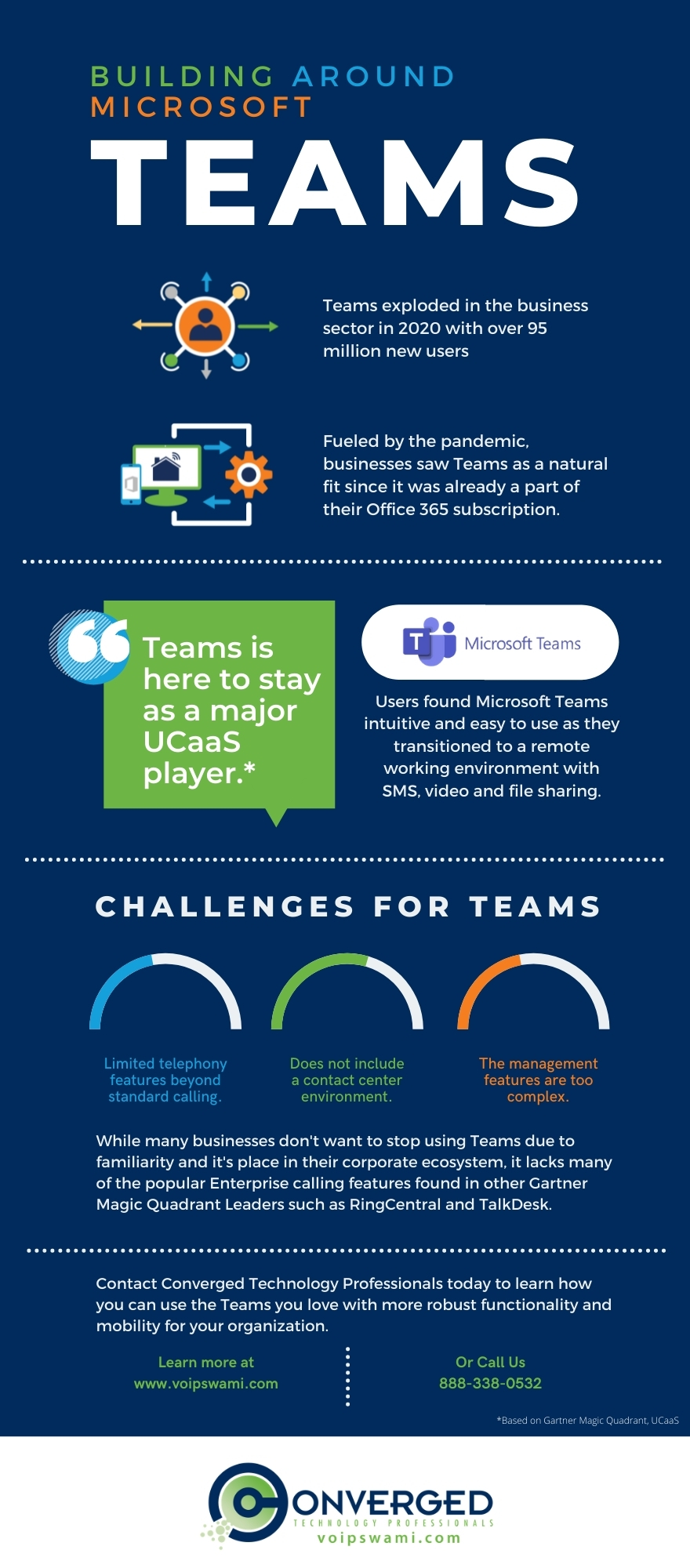
Microsoft Teams has experienced steady growth over the past few years, with a notable spike of new users during the pandemic. As businesses worldwide pivoted to fully remote work models, reliable unified communications were critical for continued business operation.
Microsoft Teams has plenty of great features that appeal to enterprises like video conferencing, broadcasting, webinar capabilities, and real-time collaboration tools. For instance, huge enterprises like Pfizer and Ernst & Young have over 100,000 users of Microsoft Teams apiece.
Yet, not everything is smooth sailing. There have been some serious, highly publicized outages that have affected millions of Microsoft Teams users, plus voice call capability is limited and less intuitive than other industry competitors.
Yet in the enterprise space, it’s not simple to change your communications platform overnight. Here are some things to consider if you’re thinking about seeking a Microsoft Teams alternative.
How Microsoft Teams Proved Itself So Valuable
Microsoft Teams was already growing at a decent pace before the pandemic: Their revenue increased from $10 million in 2017 to over $800 million only two years later. This trend in revenue growth aligns with the inevitable shift to digital workplaces. However, the pandemic introduced unforeseen challenges that left many companies in dire straits. They needed to communicate with a remote workforce, and they needed a way to keep communication lines open with customers, partners and prospects.
Enter Microsoft Teams. Teams offered an easy way for companies to message, video conference, file share and collaborate in real-time. Microsoft added 95 million users in 2020, as it became one of the most popular global apps during the COVID-19 pandemic. And Microsoft continued to expand and improve its platform throughout the crisis.
They created Together Mode for meetings during the pandemic, which allows attendees to sit next to each other in a virtual space. The NBA even used Together Mode for fans during live games.
To understand how explosive the Microsoft Teams adoption was, it’s worth noting that by Q4 of 2020 they had grown to 115 million users. That’s up from 20 million total users in 2019. Here's an infographic with a summary of where Teams is at in our assessment.

Potential Drawbacks for an Enterprise
There are so many pros to Microsoft Teams that it’s easy to see why enterprises love it so much- it's already bundled with Microsoft Office and delivers a simple user experience for chats and calls. But there are also drawbacks that companies are beginning to notice:
Microsoft Teams uses a Large Amount of Server Space, especially when users within the organization create a number of sub-teams for various conversations. Also, there’s no notifications when identical teams are created more than once.
There’s Limited Telephony Capability outside standard calling, plus features like the call queue have experienced issues and delays. A lack of extension numbers is also problematic for enterprise organizations.
Teams is not Ideal For Contact Centers that deal with heavy calling, customer messaging and other forms of communication. Calling is an add-on feature that’s delivered through a 3rd party without enterprise-level functionality.
Potential Service Outages are becoming increasingly common. Microsoft has experienced several widely publicized outages that impacted millions of users worldwide. While it’s hoped that these issues are isolated, the possibility of widespread business disruption might concern large enterprises.

How to Enhance Your Microsoft Teams Experience
Ultimately, Microsoft Teams will get the job done for many businesses. But for enterprise organizations, the standalone platform is not reliable enough and doesn't provide many necessary features. If you are looking to create a superior telephony experience or need more robust communication for customers, it may make sense to choose a modern cloud PBX system that allows for native or open API integrations of Microsoft Teams.
By integrating a robust phone system into Teams, you’ll have the convenience of keeping the same meeting and collaboration tools while also ensuring reliable connection with your customers, partners and affiliates. Some vendors offer up service level agreements up to 99.999% for uptime as well.
Converged Technology Professionals can help you find the perfect CCaaS solution to integrate with Microsoft Teams. Our expert support, professional guidance and our top-rated IT Team will help you execute your most critical business and communications objectives. Contact us to learn more.
If you enjoyed this article you may also enjoy:
.jpg?sfvrsn=16322788_3)